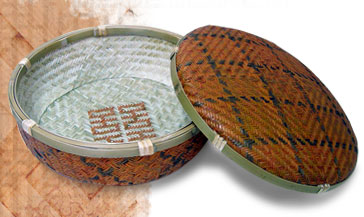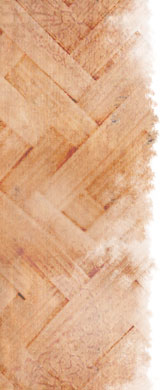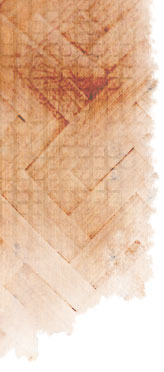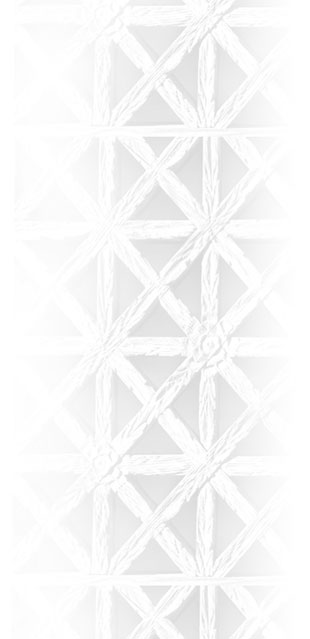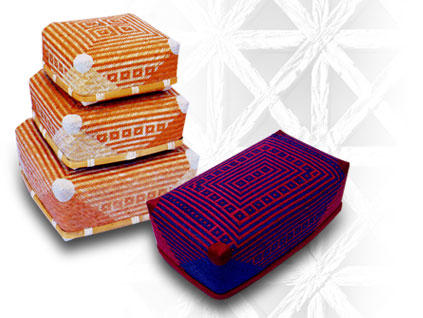Meanwhile, the bamboo industry of Damyang began to be seriously affected by the arrival of plastic household products. As the demand for bamboo products began to decline, he left the company and stopped making bamboo wares. However, he could not leave the art of bamboo weaving altogether. A breakthrough came when he found a dust-covered chaesang box (coloful bamboo box) on a rack in his house. It was one of the wedding gifts his grandmother brought when she married, now belonging to his wife. The colors had faded with time but he found that the beauty and elegance of the box was too difficult to ignore. It had complex patterns that he had never tried before, and he didn’t know how to dye the bamboo strips. Despite those challenges, he instantly knew that it was what he wanted to do. From then on, he put all his energy into the research of color combinations and patterns of chaesang ware, and developed his own color patterns and designs. Today, a total of 37 designs are known to have been developed by Seo Han-gyu. The aesthetic value of his art became publicly acknowledged when he awarded the Presidential Prize in the 7th National Craft Contest in 1982 with a work titled Pijukseok (“Bamboo Skin Mat”). Three years later his art attracted international attention when he was invited to the USA to give a demonstration of chaesang weaving in Lincoln Memorial Hall, Washington DC. However, in January 1987 he received his highest honor: he was designated by the Korean government as a Master Craftsperson of Chaesang Weaving, an expression of acknowledgement and respect for the remarkable achievement he had made throughout his life. The sight of the aged artist sitting in a workshop gazing intently at the colored bamboo strips before him reminds us of an old bamboo branch that may bend but may never be broken by the harsh winds of life. Not only does he weave the elegant chaesang wares from bamboo strips, he also weaves his life experiences into each basket and box. The paper-thin but iron-strong bamboo strips used to make a chaesang box are cut from three-year-old bamboo trees in winter. The size of the strips is normally 2-3mm wide and 0.1mm thick, although highly-skilled craftspeople like Seo Han-gyu prefer thinner strips. Preparing strips of this size requires a high level of skill and experience. The chaesang wares made by Seo Han-gyu are not just reproductions of old art forms. They display a wonderful variety of patterns, colors and forms, most of which were developed by Seo himself. Many of his works exhibit classical beauty and grace mixed with surprisingly modern sensibility. The design of the Buddhist swastika (卍), for instance, has now evolved to more than 40 varieties, although there was just one type when he first took up the art. While the forms, sizes, color combinations and patterns are now delightfully diverse, he prefers traditional materials and working methods. Seo’s chaesang wares display such fine workmanship and artistry that viewers often forget that what they are seeing is actually made of bamboo. The order and harmony of colors and textures within the dynamic movements of several hundred bamboo strips are so perfect that viewers sometimes wonder if supernatural hands made them. According to Korean folk belief, a superior craftsperson is not made in this world but is sent by the Creator. The wonderful art of chaesang developed by Seo Han-gyu seems to prove that this belief is true. View the master's works |
|||||||
|













